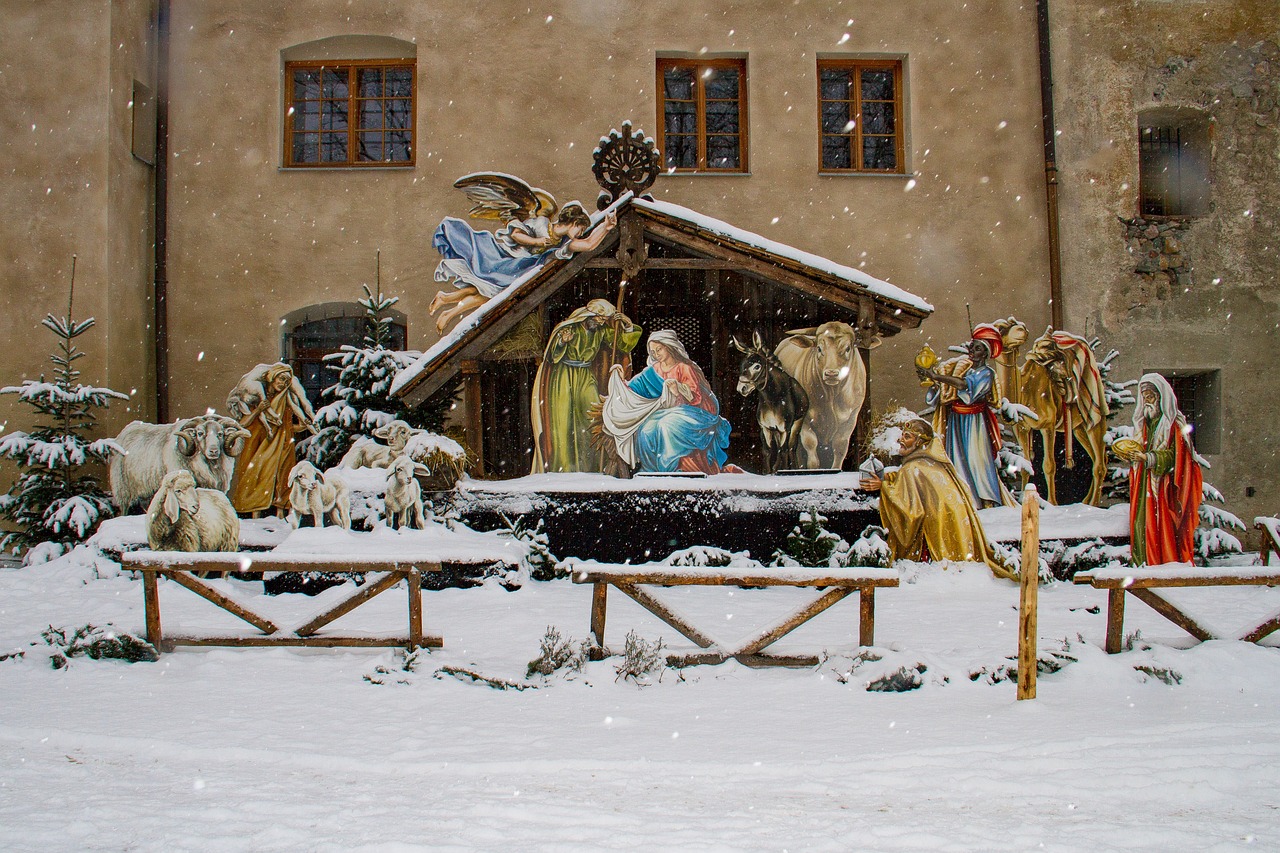Austria Video
Indulging in Local Cuisine without Breaking the Bank in Austria
Austria is a country known for its rich culinary traditions and delicious local cuisine. From hearty traditional dishes to mouthwatering desserts, Austrian food offers a wide range of flavors and textures. While dining out in Austria can sometimes be expensive, there are plenty of ways to indulge in local cuisine without breaking the bank. Whether you’re a budget traveler or simply looking for affordable dining options, this article will guide you on how to enjoy the best of Austrian food without emptying your wallet.
1. Seek Out Local Eateries
One of the best ways to experience authentic Austrian cuisine at an affordable price is to dine at local eateries. These establishments, often family-owned and operated, offer traditional dishes made with locally sourced ingredients. Look for restaurants and taverns that are frequented by locals rather than tourists. These places often have lower prices and serve generous portions.
- Schnitzel: A must-try dish in Austria, schnitzel is a breaded and fried meat cutlet, usually made from pork or veal. It is typically served with a side of potatoes or salad.
- Goulash: A hearty stew made with tender beef, onions, and paprika, goulash is a popular dish in Austrian cuisine. It is often served with bread or dumplings.
- Spätzle: These soft egg noodles are a staple in Austrian cuisine. They are commonly served as a side dish with roasted meats or as a main course with cheese and caramelized onions.
- Apfelstrudel: A classic Austrian dessert, apfelstrudel is a sweet pastry filled with spiced apples and raisins. It is often served warm with a scoop of vanilla ice cream.
Austria Image 1:

2. Visit Local Markets
Another way to indulge in local cuisine without breaking the bank is to visit local markets. These markets offer a wide variety of fresh produce, meats, cheeses, and baked goods at affordable prices. You can pick up ingredients to cook your own Austrian-inspired meals or enjoy ready-to-eat snacks from the market stalls.
- Käsekrainer: A popular street food in Austria, käsekrainer is a sausage filled with melted cheese. It is often served with mustard and bread.
- Brettljause: This traditional Austrian snack platter typically includes a selection of cured meats, cheeses, pickles, and bread. It’s perfect for sharing with friends or enjoying as a light meal.
- Strudel: Apart from the famous apfelstrudel, Austrian markets often offer a variety of sweet and savory strudels. Fillings can range from spinach and cheese to poppy seeds and cherries.
- Pretzels: Soft and chewy pretzels are a popular snack in Austria. They are often sprinkled with coarse salt and served warm.
3. Opt for Lunch Specials
Many restaurants in Austria offer lunch specials that provide a more affordable way to enjoy local cuisine. These specials usually include a set menu with a main course, side dish, and sometimes a drink or dessert. By dining out for lunch instead of dinner, you can often find discounted prices and take advantage of these lunch deals.
- Tafelspitz: A traditional Austrian dish, tafelspitz is boiled beef served with a flavorful broth, root vegetables, and a side of apple horseradish sauce. It is often accompanied by boiled potatoes or noodles.
- Käsespätzle: Similar to regular spätzle, käsespätzle is a cheesy version of the dish. It consists of soft egg noodles mixed with melted cheese and topped with crispy onions.
- Sacher Torte: This famous Viennese chocolate cake is a must-try dessert in Austria. It features layers of dense chocolate cake filled with apricot jam and covered in a smooth chocolate ganache.
- Wiener Würstel: Vienna sausages, also known as wiener würstel, are a popular street food in Austria. They are usually served with mustard and a side of bread.
Austria Image 2:

4. Take Advantage of Happy Hour
If you’re looking to enjoy a drink with your meal, consider taking advantage of happy hour deals. Many bars and restaurants in Austria offer discounted prices on drinks and sometimes even appetizers during specific hours of the day. This can be a great way to try local beers, wines, or spirits without spending a fortune.
- Sturm: Sturm is a young wine, often slightly fizzy, that is only available during the harvest season. It has a sweet and refreshing taste and is best enjoyed chilled.
- Spritzer: A popular Austrian beverage, spritzer is a refreshing mix of white wine and sparkling water. It is a light and fruity drink that is perfect for warm summer days.
- Aperol Spritz: While not originally Austrian, Aperol Spritz has become a popular drink in the country. It is made with Aperol, prosecco, and a splash of soda water, creating a vibrant and refreshing cocktail.
- Gin and Tonic: For those who prefer spirits, gin and tonic is a classic choice. Many bars in Austria offer a wide selection of gins to choose from, allowing you to explore different flavors.
5. Explore Street Food Options
Street food stalls and food trucks can be found in various cities and towns across Austria, offering a diverse range of affordable and delicious options. From traditional Austrian snacks to international flavors, street food is a great way to taste a variety of dishes without spending too much.
- Langos: A Hungarian specialty that has become popular in Austria, langos is a deep-fried dough topped with various savory or sweet toppings. It can be enjoyed as a snack or a filling meal.
- Kebab: Turkish-style kebabs are widely available in Austria and make for a satisfying and affordable meal. They usually consist of grilled meat, salad, and various sauces wrapped in a flatbread.
- Burger: Austrian street food scene also offers gourmet burgers with unique flavor combinations. Look out for local vendors that use high-quality ingredients and creative toppings.
- Crepes: Sweet or savory crepes are a popular street food option in Austria. They can be filled with ingredients like Nutella, fresh fruits, cheese, or ham.
Austria Image 3:

6. Try Local Bakeries
Austria is famous for its delicious pastries and baked goods, and visiting local bakeries is a great way to indulge in these treats without breaking the bank. Bakeries often offer a wide variety of freshly baked bread, pastries, and cakes at affordable prices.
- Kaisersemmel: These soft and crusty rolls are a staple in Austrian cuisine. They are perfect for making sandwiches or enjoying with butter and jam.
- Topfenstrudel: Similar to apfelstrudel, topfenstrudel is a pastry filled with a sweet and tangy quark cheese mixture. It is often served warm and dusted with powdered sugar.
- Mohnkuchen: Mohnkuchen is a poppy seed cake that is popular in Austria. It has a unique flavor and is often enjoyed with a cup of coffee.
- Buchteln: These sweet yeast buns are filled with jam or a sweet cheese filling. They are usually served warm and dusted with powdered sugar.
7. Embrace the Heuriger Experience
In Austria, a heuriger is a wine tavern or cellar where local winemakers serve their own wines. Visiting a heuriger is not only a great opportunity to taste local wines but also to enjoy traditional Austrian cuisine in a unique setting. Heurigers often offer buffet-style meals with a wide selection of dishes at reasonable prices.
- Käseplatte: A cheese platter featuring a variety of local cheeses is a common offering at heurigers. It is typically served with bread, butter, and pickles.
- Brettljause: Similar to the snack platter mentioned earlier, heurigers often serve a generous selection of cured meats, cheeses, and bread as part of their buffet.
- Backhendl: Backhendl is a traditional Austrian dish consisting of breaded and fried chicken. It is often served with potato salad and a creamy dip.
- Sauerkraut: Sauerkraut, fermented cabbage, is a common side dish in Austrian cuisine. It pairs well with various meat dishes and adds a tangy flavor.
8. Take Advantage of Lunch Menus
Many restaurants in Austria offer lunch menus with fixed prices, making them a budget-friendly option for trying local cuisine. These menus typically include a choice of appetizer, main course, and dessert or coffee.
- Frittatensuppe: A traditional Austrian soup, frittatensuppe is made with clear broth and thin strips of pancake-like omelet. It is a comforting and flavorful starter.
- Wiener Schnitzel: Enjoy a classic Wiener Schnitzel as part of a lunch menu. It is a breaded and fried veal or pork cutlet served with a side of potatoes or salad.
- Palatschinken: Similar to crepes, palatschinken are thin pancakes that can be filled with various sweet or savory fillings. They are often served as a dessert option in lunch menus.
- Kaiserschmarrn: Kaiserschmarrn is a fluffy shredded pancake served with powdered sugar and fruit compote. It is a popular dessert in Austria and can also be found on lunch menus.
9. Enjoy the Coffeehouse Culture
Coffeehouses are an integral part of Austrian culture, and they offer a cozy and relaxed atmosphere to enjoy a cup of coffee and a slice of cake. While some coffeehouses can be expensive, there are affordable options available.
- Melange: Melange is a classic Viennese coffee made with equal parts espresso and steamed milk, topped with a dollop of milk foam. It is often served with a glass of water.
- Apfelstrudel mit Schlag: Pair your coffee with a slice of warm apfelstrudel topped with whipped cream. It’s a delightful combination of flavors and textures.
- Einspänner: Einspänner is a strong black coffee served in a glass topped with a dollop of whipped cream. It is a popular choice among coffee connoisseurs.
- Sachertorte: Many coffeehouses in Austria serve the famous Sachertorte, a dense chocolate cake with a layer of apricot jam and a glossy chocolate glaze.
10. Explore Student-Friendly Establishments
Austria is home to numerous universities, and areas near campuses often have a vibrant student scene. These areas are filled with budget-friendly cafes, bars, and restaurants that cater to students’ needs.
- Döner Kebab: Turkish-style döner kebabs are a popular choice among students in Austria. They are affordable, filling, and can be found in many student-friendly areas.
- Pizza: Pizza places offering affordable slices or whole pies can be found near universities. They are a convenient and budget-friendly option for a quick meal.
- Asian Cuisine: Many student-friendly areas have affordable Asian restaurants serving dishes like sushi, noodles, and curries.
- Vegetarian and Vegan Options: Austria has a growing number of vegetarian and vegan restaurants, making it easier to find affordable plant-based meals in student-friendly areas.
11. Consider Self-Catering Options
If you’re staying in self-catering accommodation, such as an apartment or vacation rental, take advantage of the kitchen facilities to cook your own meals. This can be a cost-effective way to enjoy local cuisine while having control over your budget.
- Käsespätzle: Cook up a batch of käsespätzle using store-bought spätzle, cheese, and onions. It’s a simple and delicious dish that can be made in no time.
- Gulasch: Prepare a hearty goulash using beef, onions, paprika, and other spices. Serve it with bread or dumplings for a satisfying meal.
- Salad: Take advantage of the fresh produce available at local markets to create refreshing salads with a variety of vegetables, cheese, and dressings.
- Strudel: If you’re feeling adventurous, try making your own strudel using store-bought pastry dough and your choice of fillings, such as apples, cherries, or cheese.
12. Take a Culinary Walking Tour
Consider joining a culinary walking tour in Austria to explore local food markets, eateries, and specialty shops. These tours provide an opportunity to taste a variety of dishes and learn about the culinary traditions of the region. While some tours can be pricey, there are affordable options available.
- Würstelstand: Visit a traditional würstelstand, a street food stand specializing in sausages. Try different types of sausages and discover regional specialties.
- Chocolate Tasting: Join a chocolate tasting tour to sample a variety of Austrian chocolates and learn about the art of chocolate making.
- Wine Tasting: Explore local vineyards and wineries on a wine tasting tour. Learn about Austrian wines and indulge in the flavors of the region.
- Cheese Tasting: If you’re a cheese lover, consider a cheese tasting tour where you can sample a wide variety of Austrian cheeses and learn about their production.
Conclusion
Indulging in local cuisine without breaking the bank in Austria is entirely possible with a bit of planning and exploration. By seeking out local eateries, visiting markets, taking advantage of lunch specials, and exploring street food options, you can savor the flavors of Austrian cuisine without straining your budget. Embrace the coffeehouse culture, try student-friendly establishments, and consider self-catering options for a more affordable dining experience. Whether you’re enjoying traditional dishes like schnitzel and strudel or exploring international flavors, Austria offers a wide range of culinary delights that won’t disappoint.
References:
– gypsywarrior.com
– austriatourism.com
– vienna-unwrapped.com
– discoveraustria.com
– austria.info


